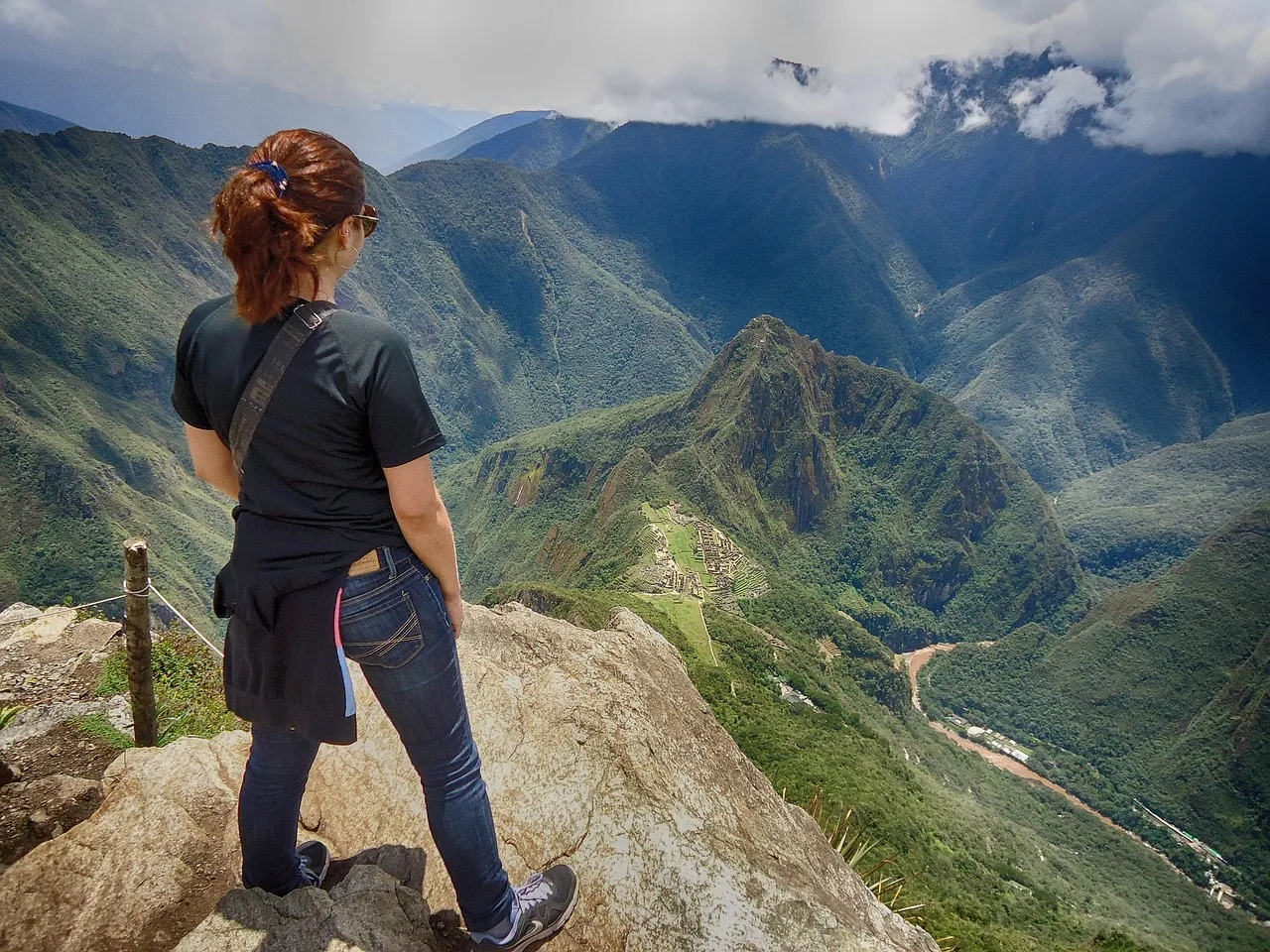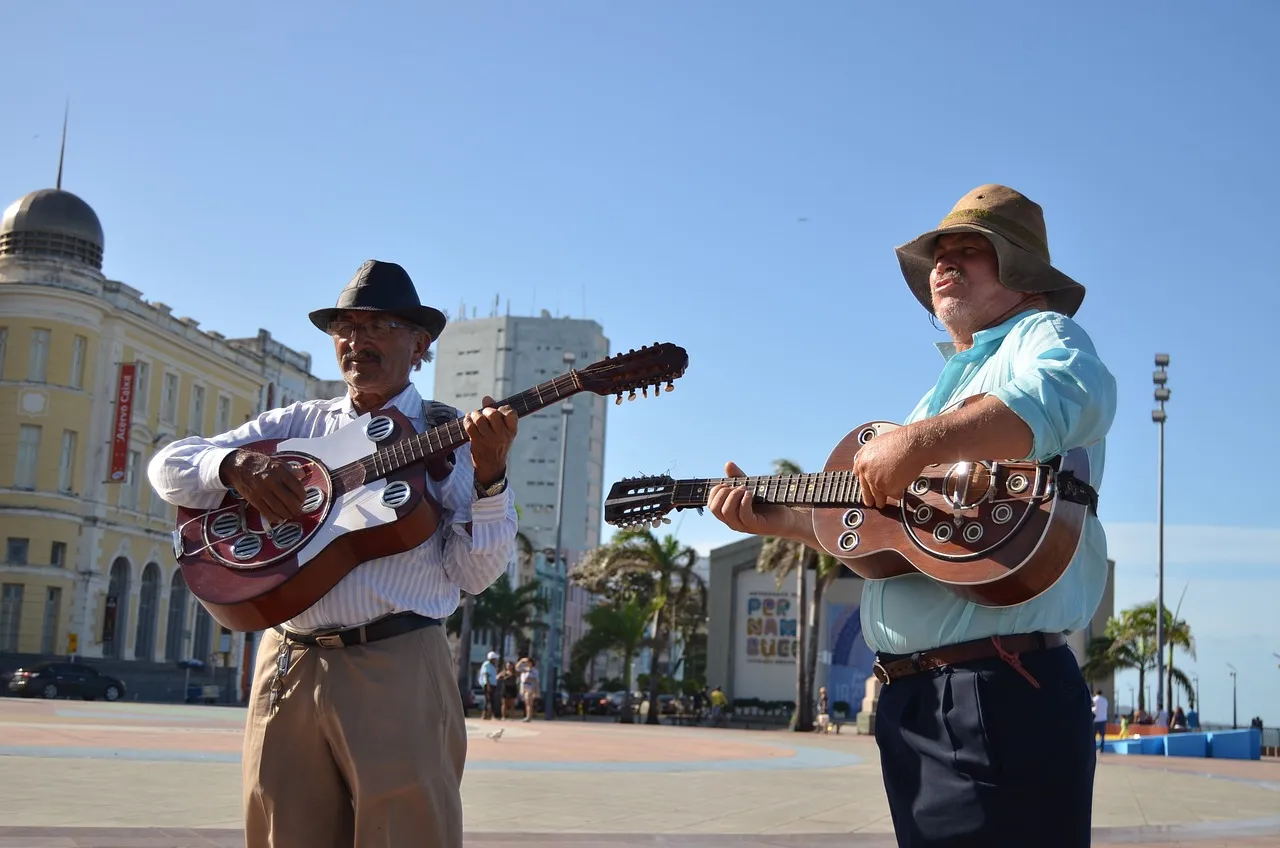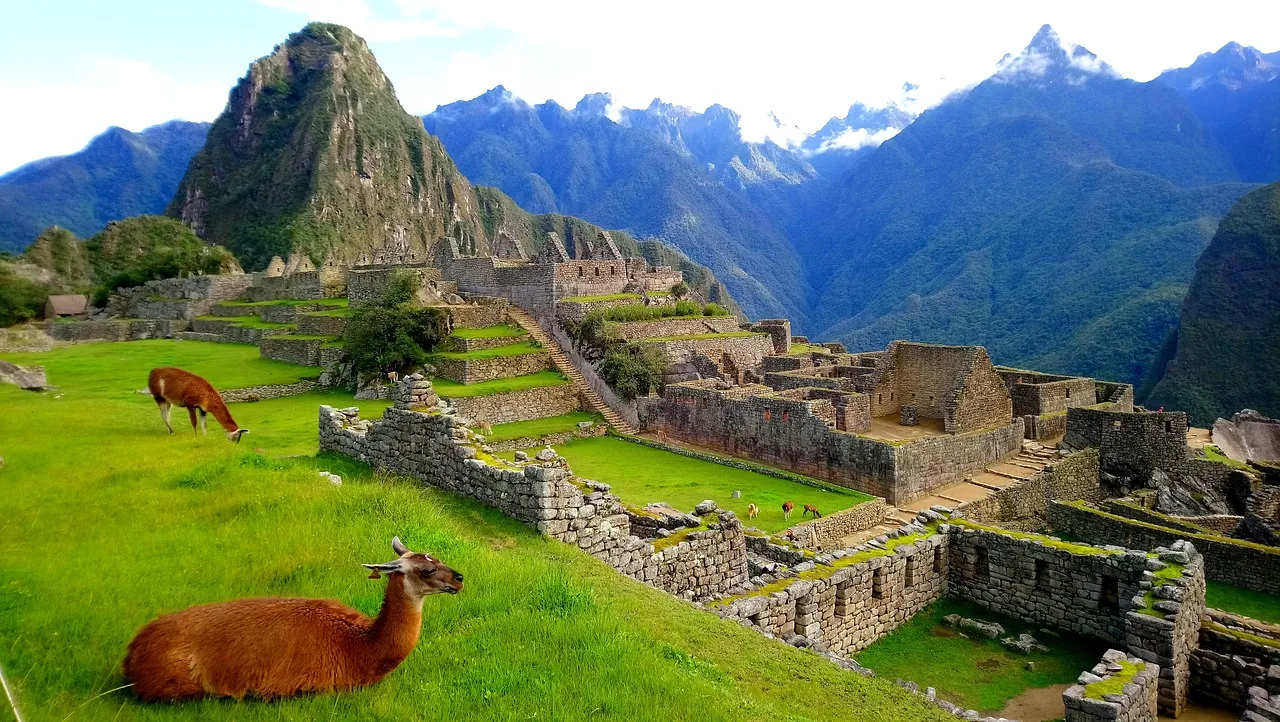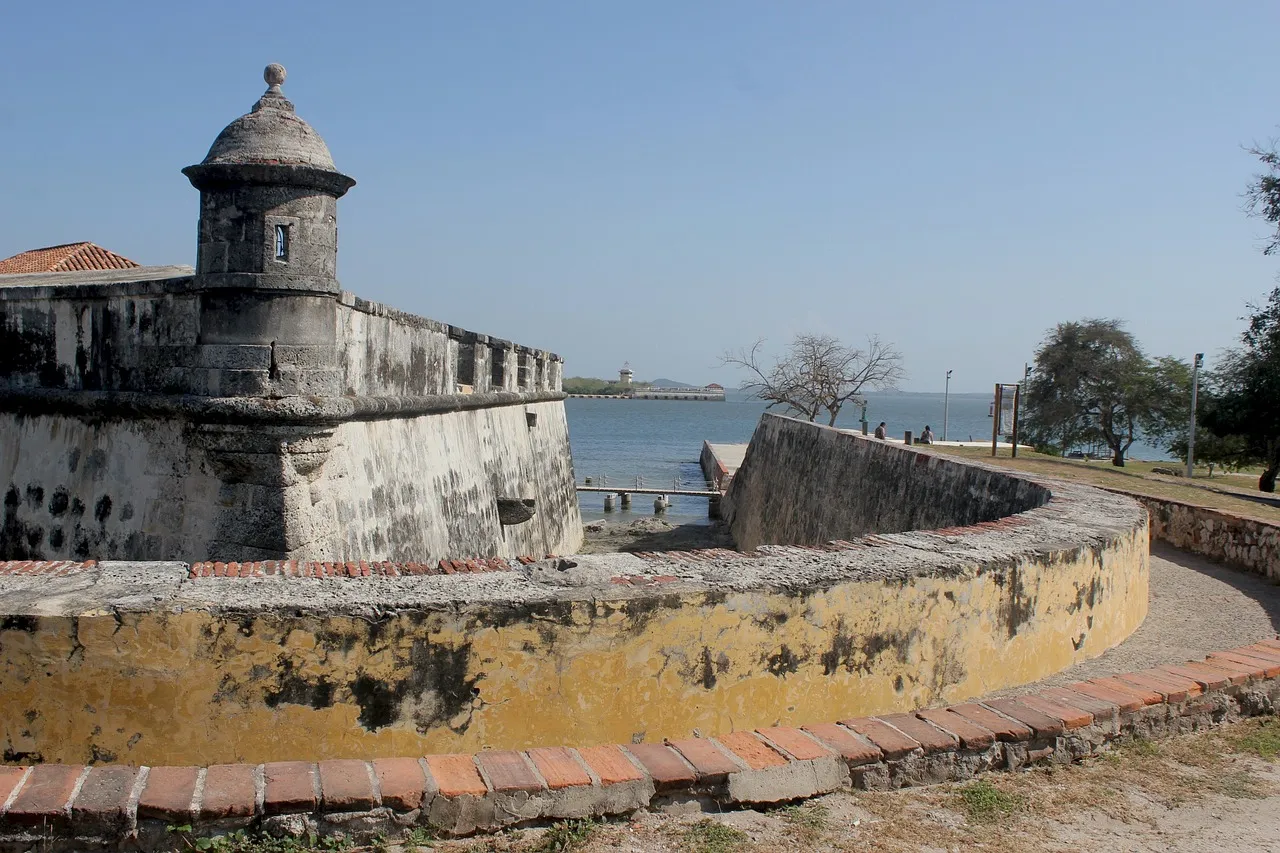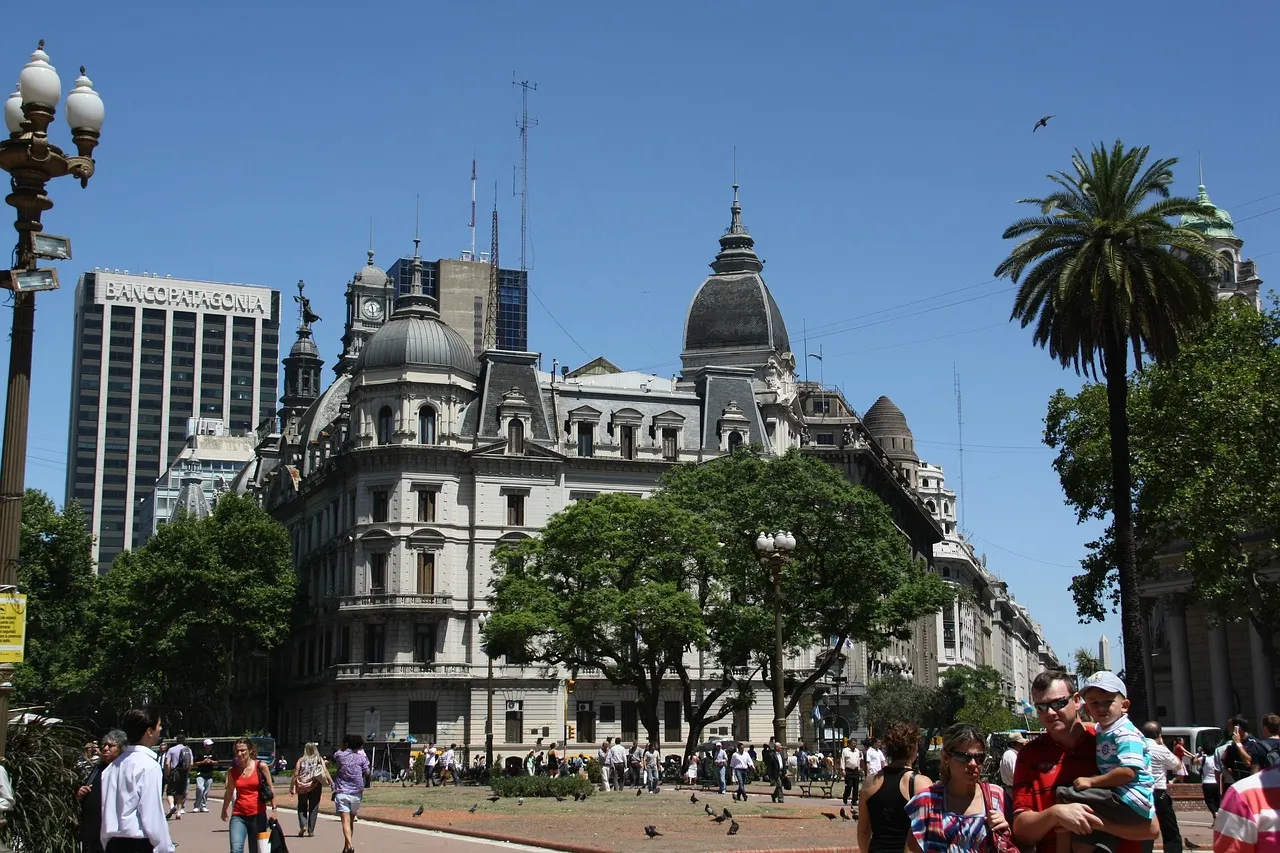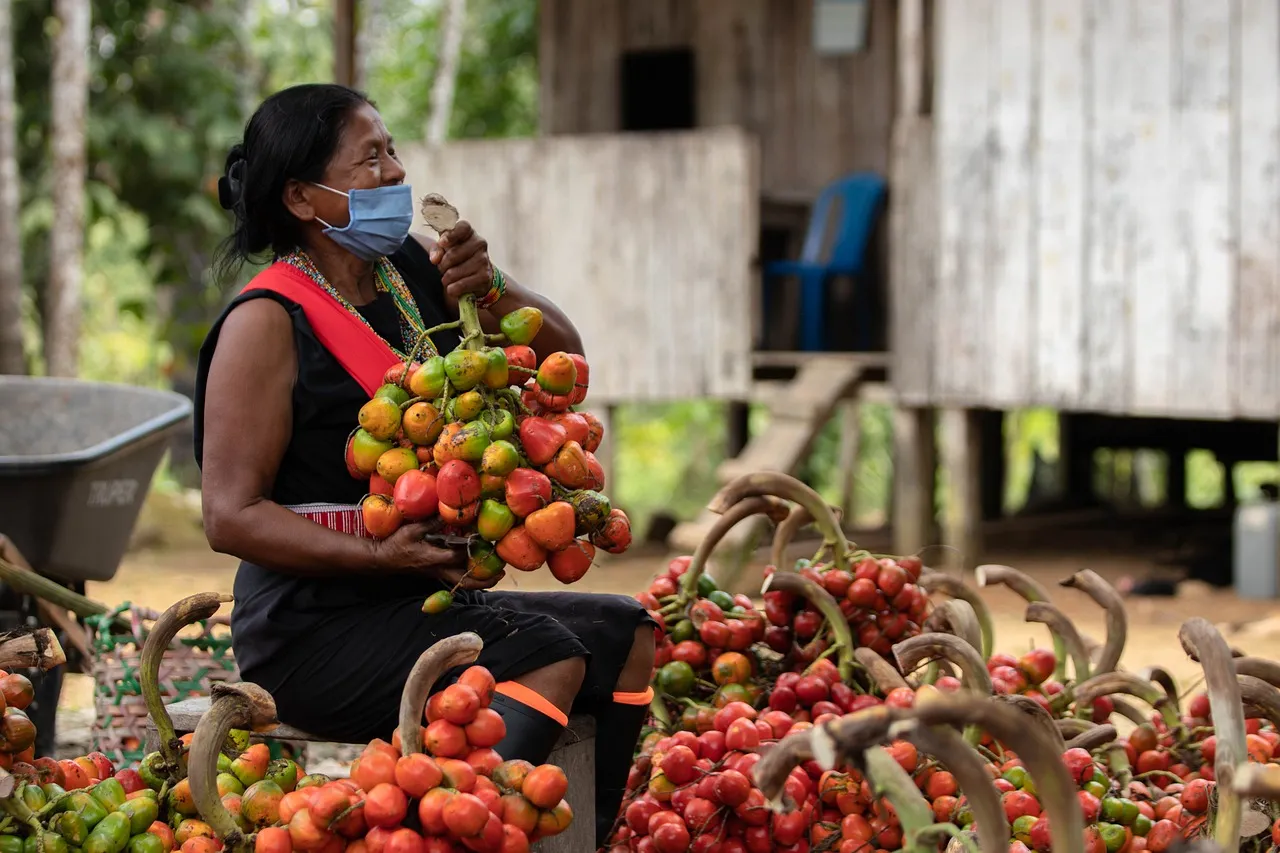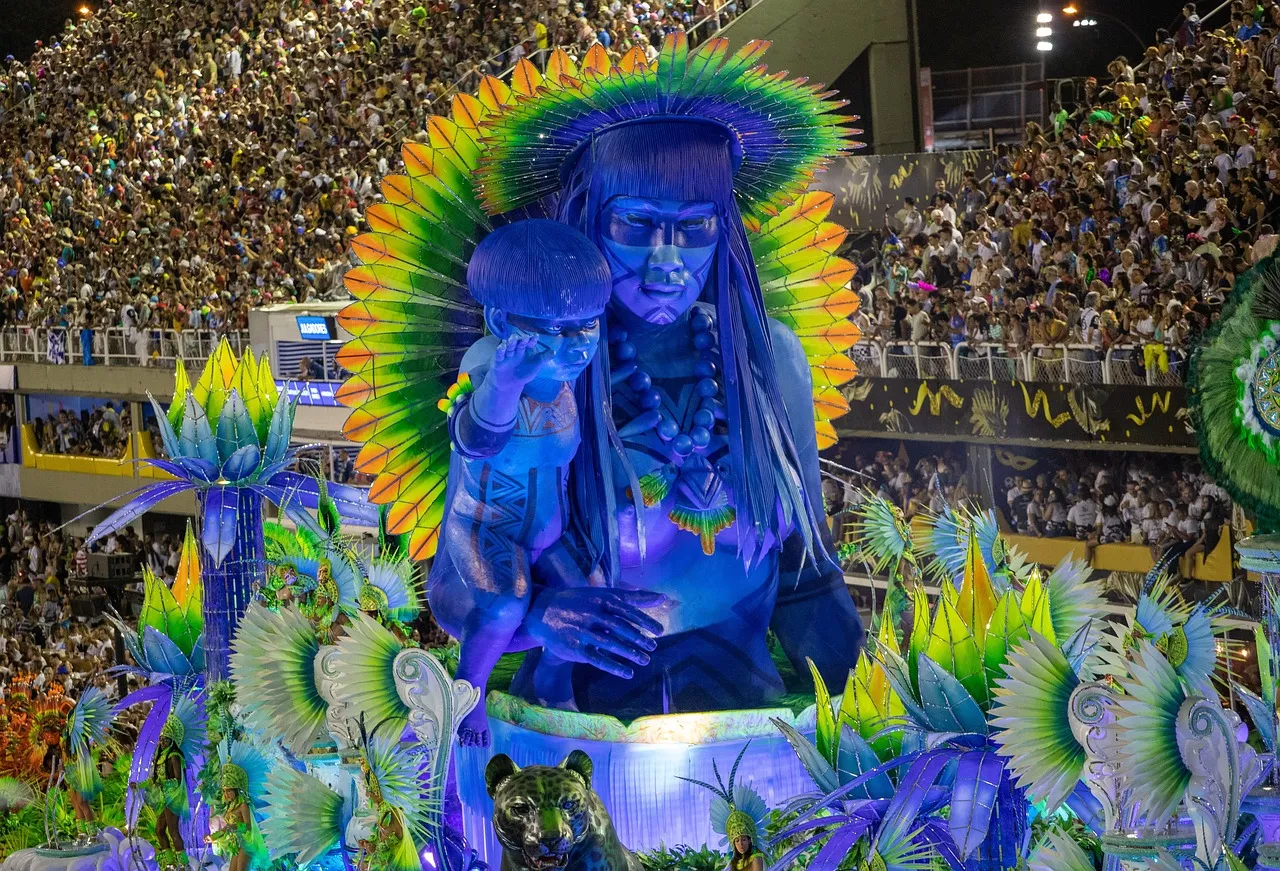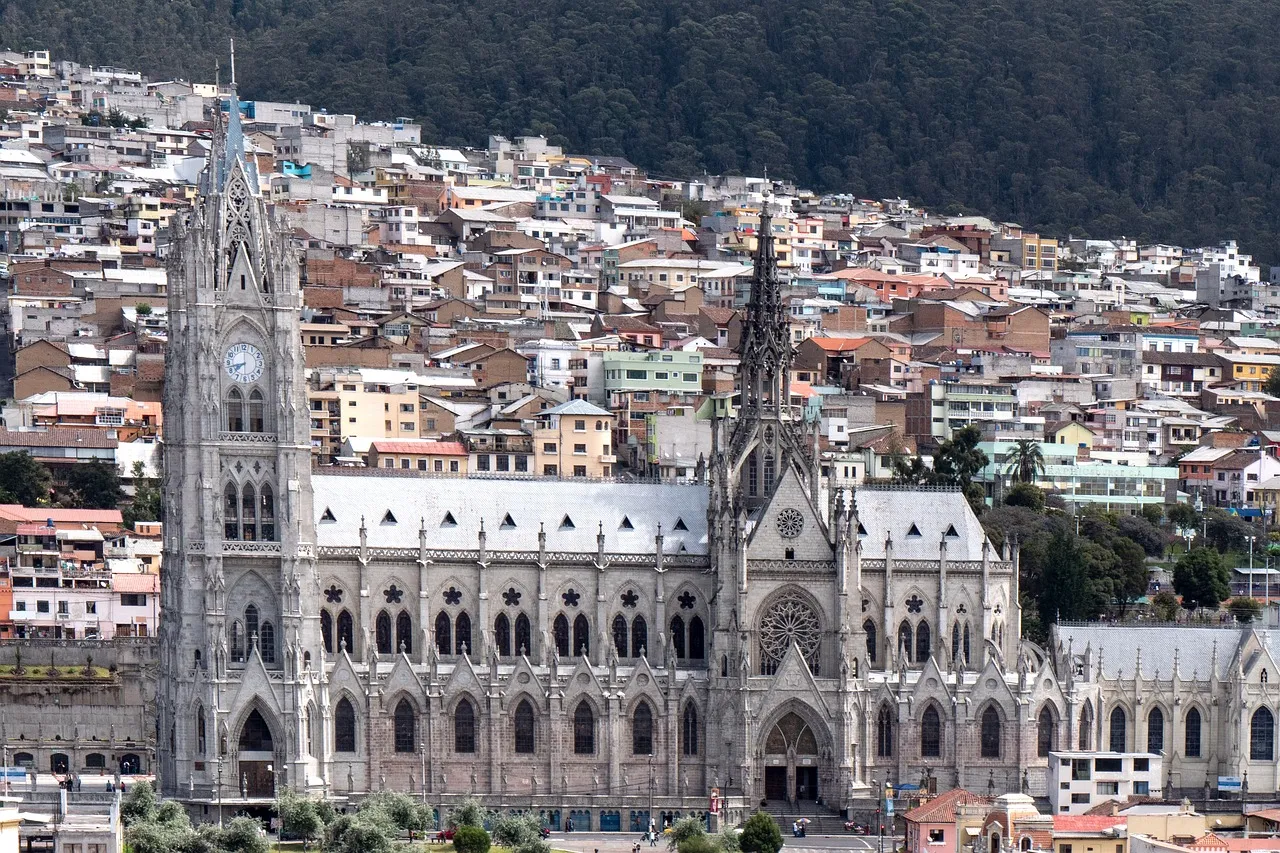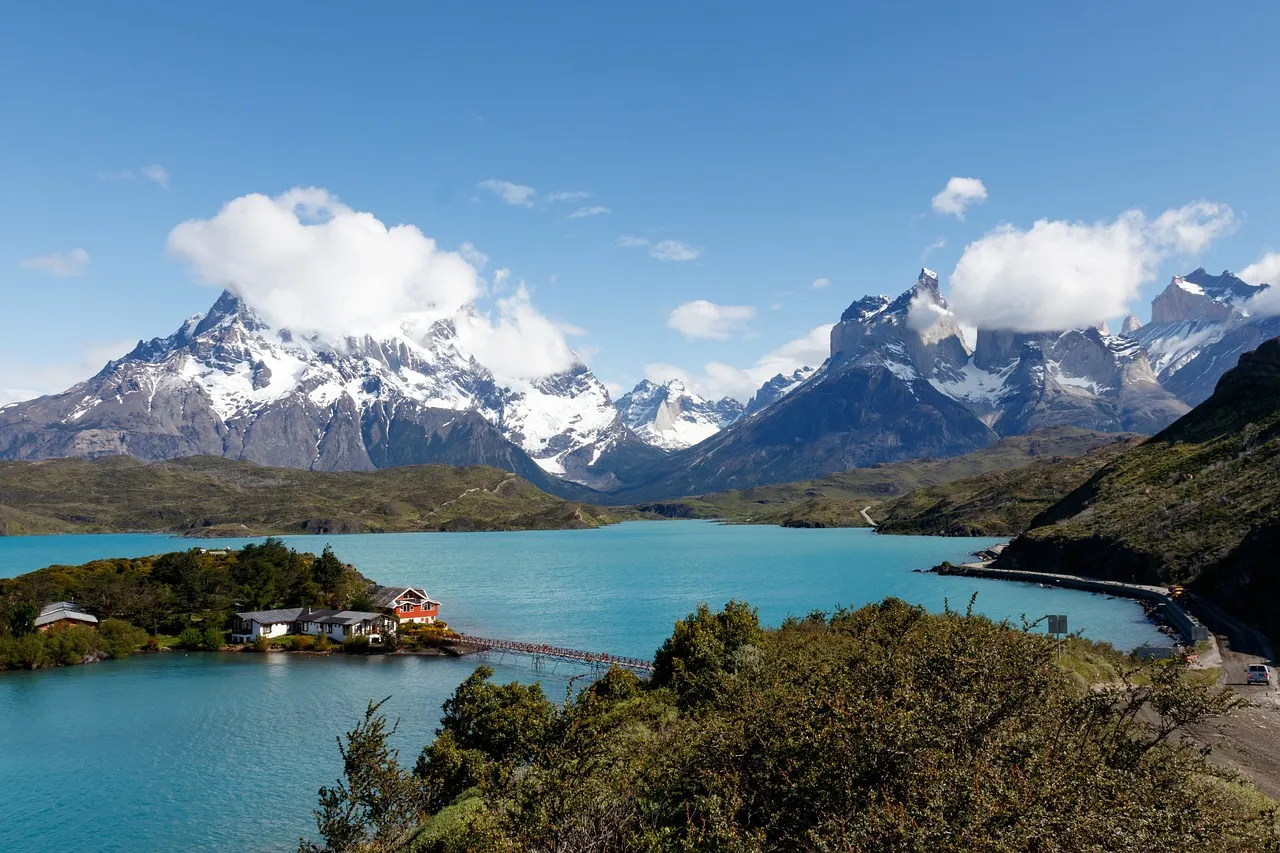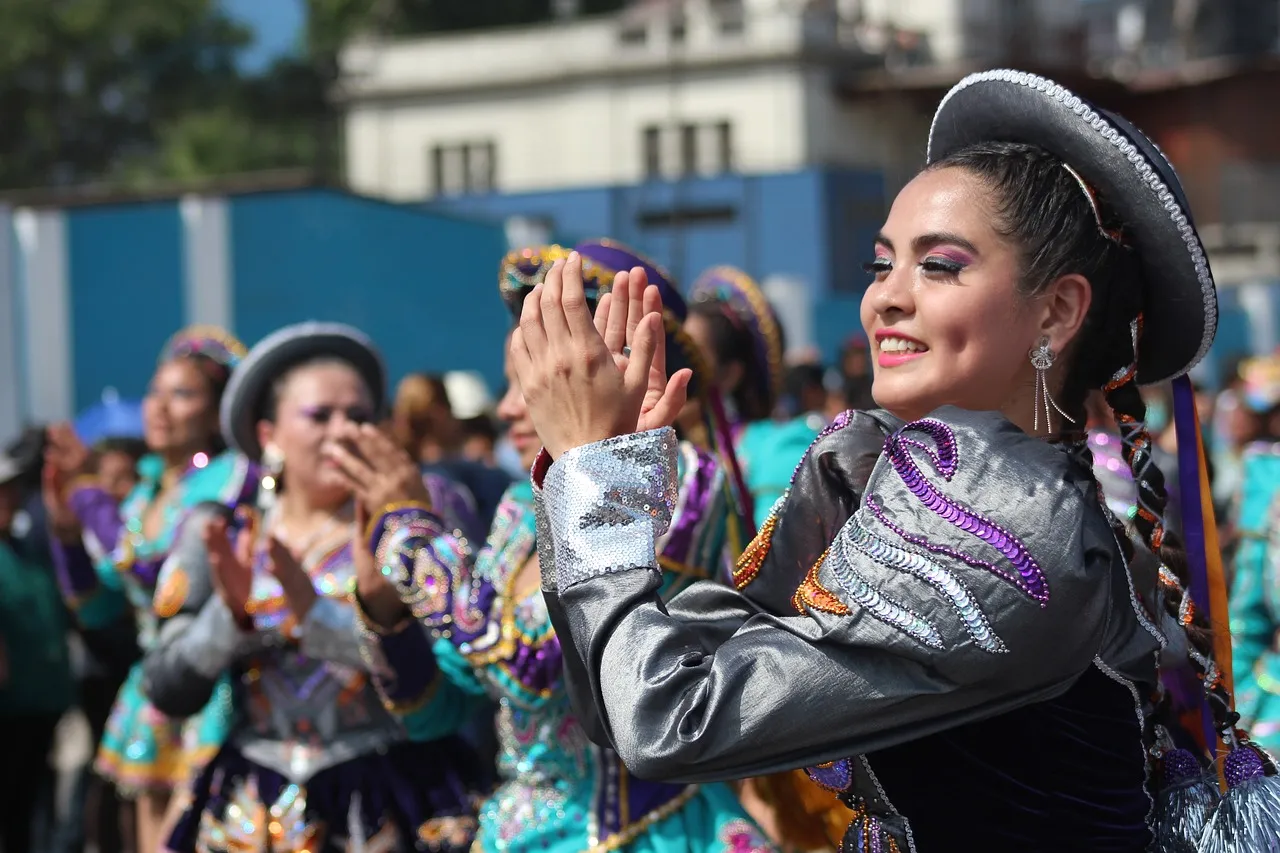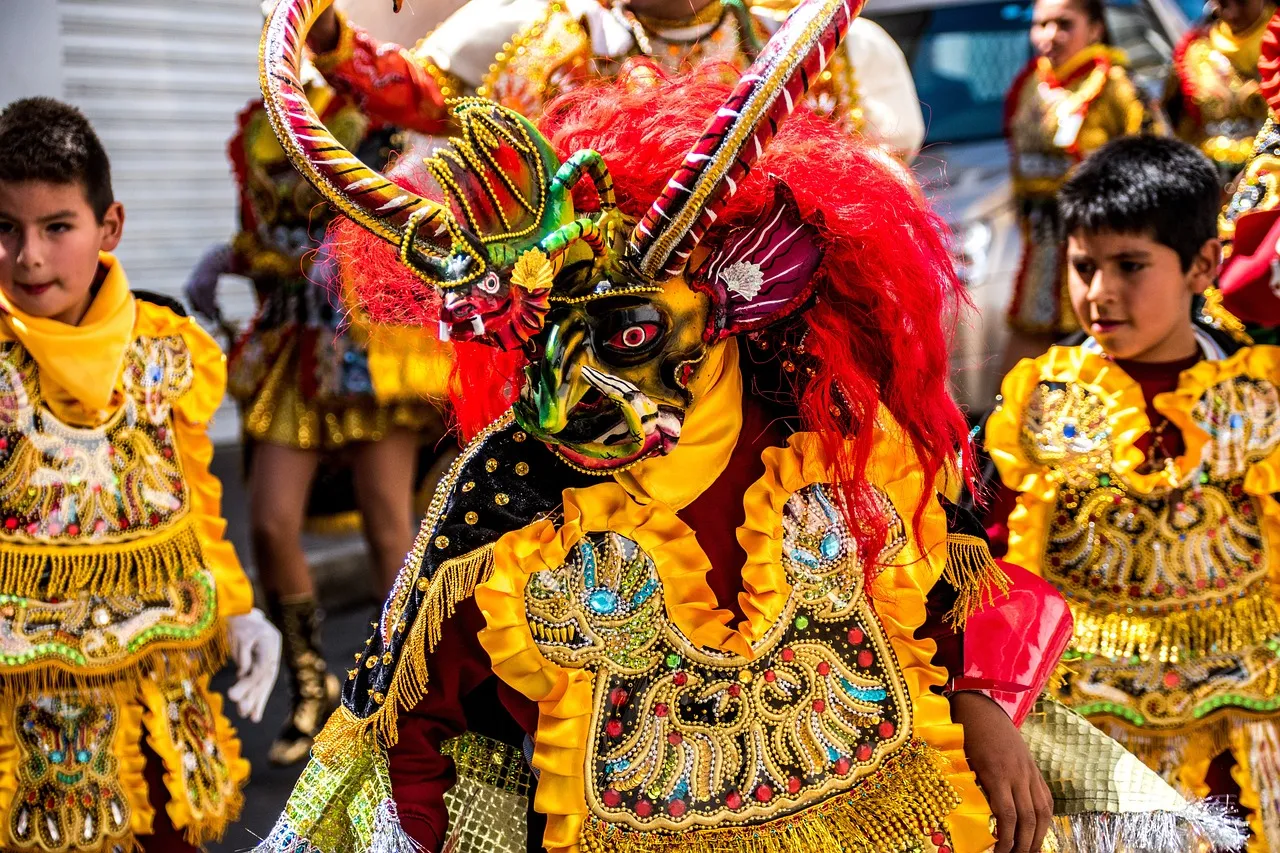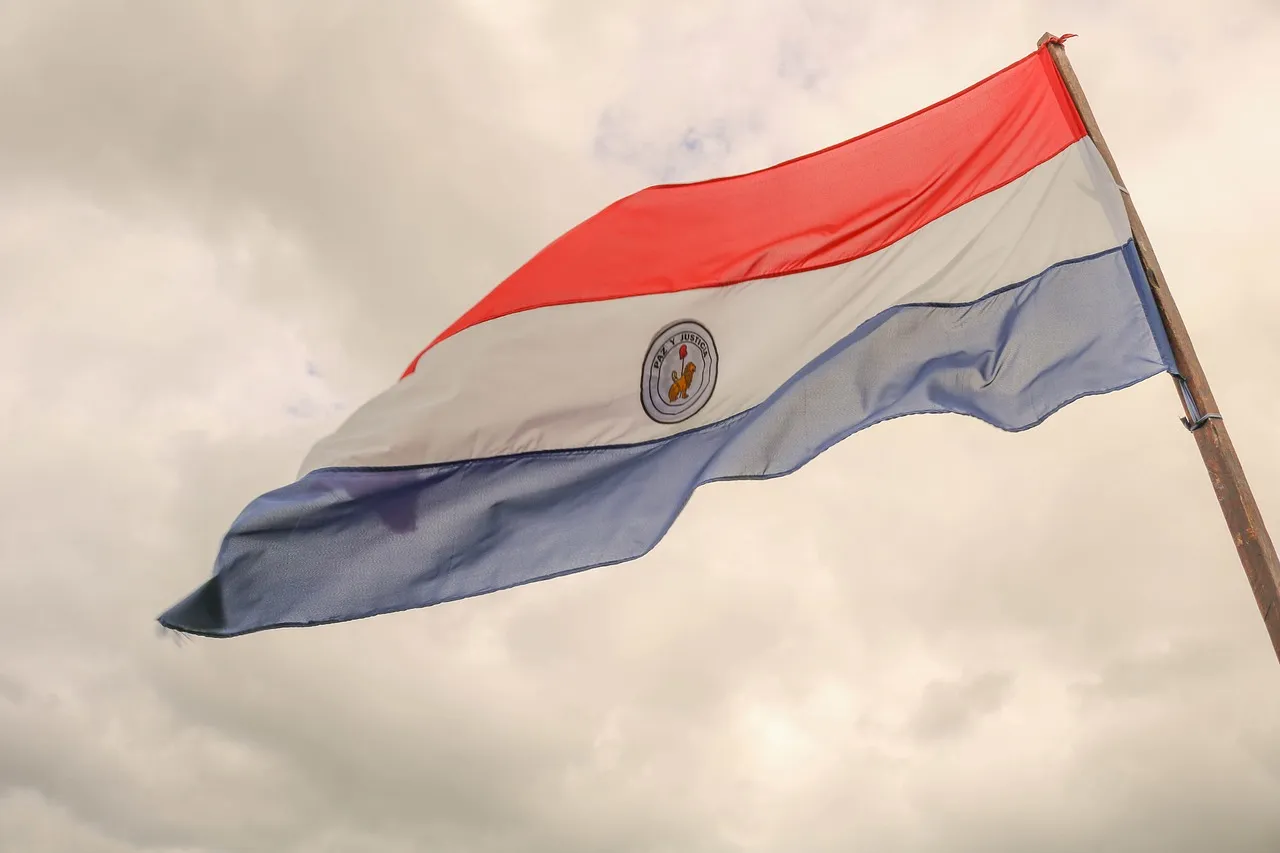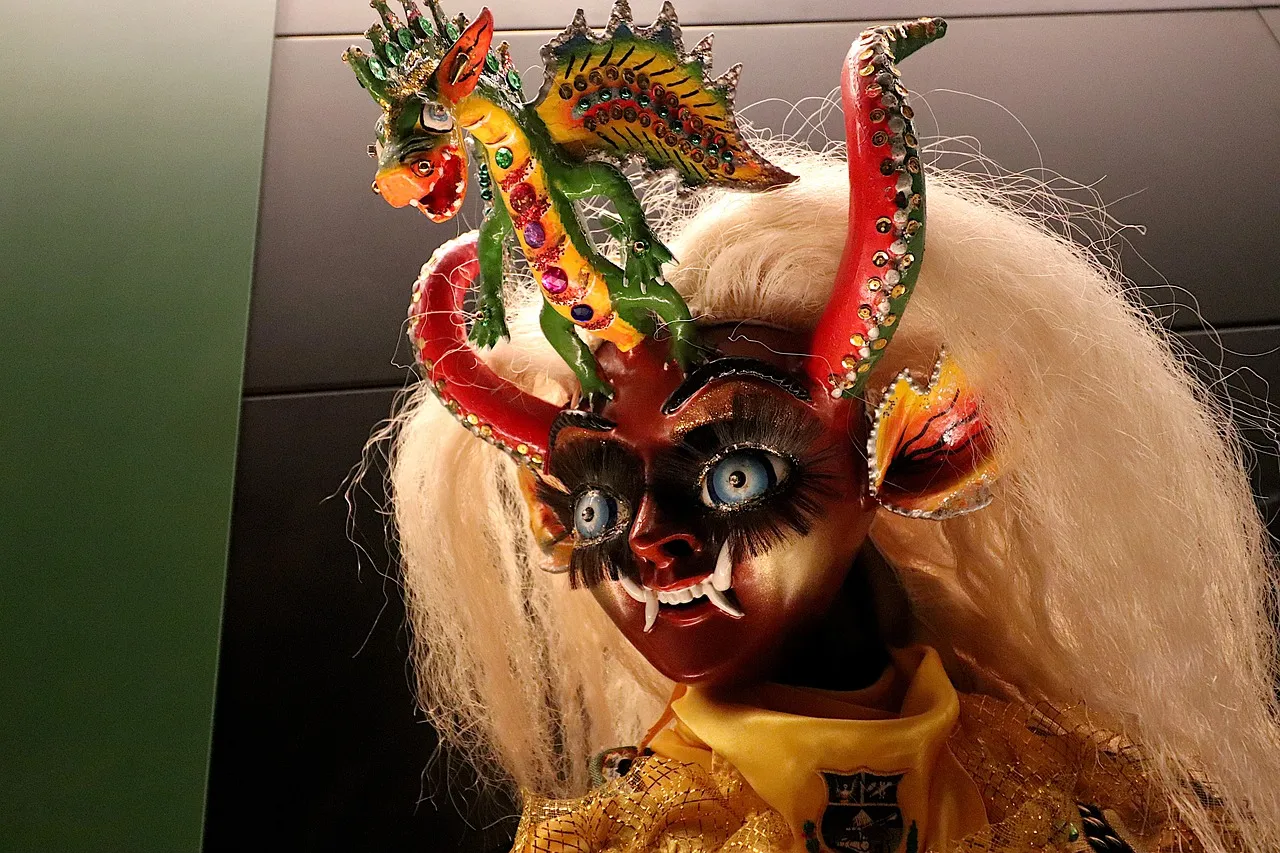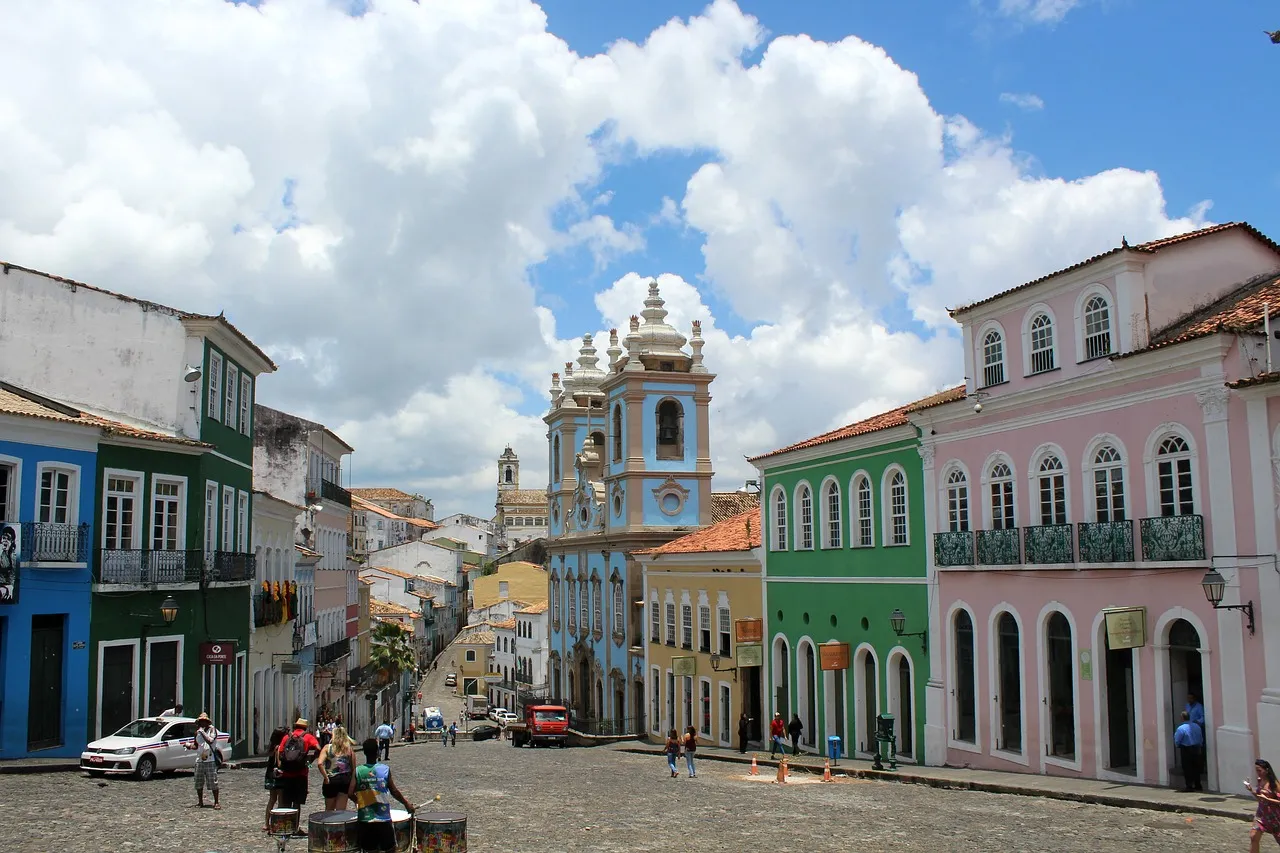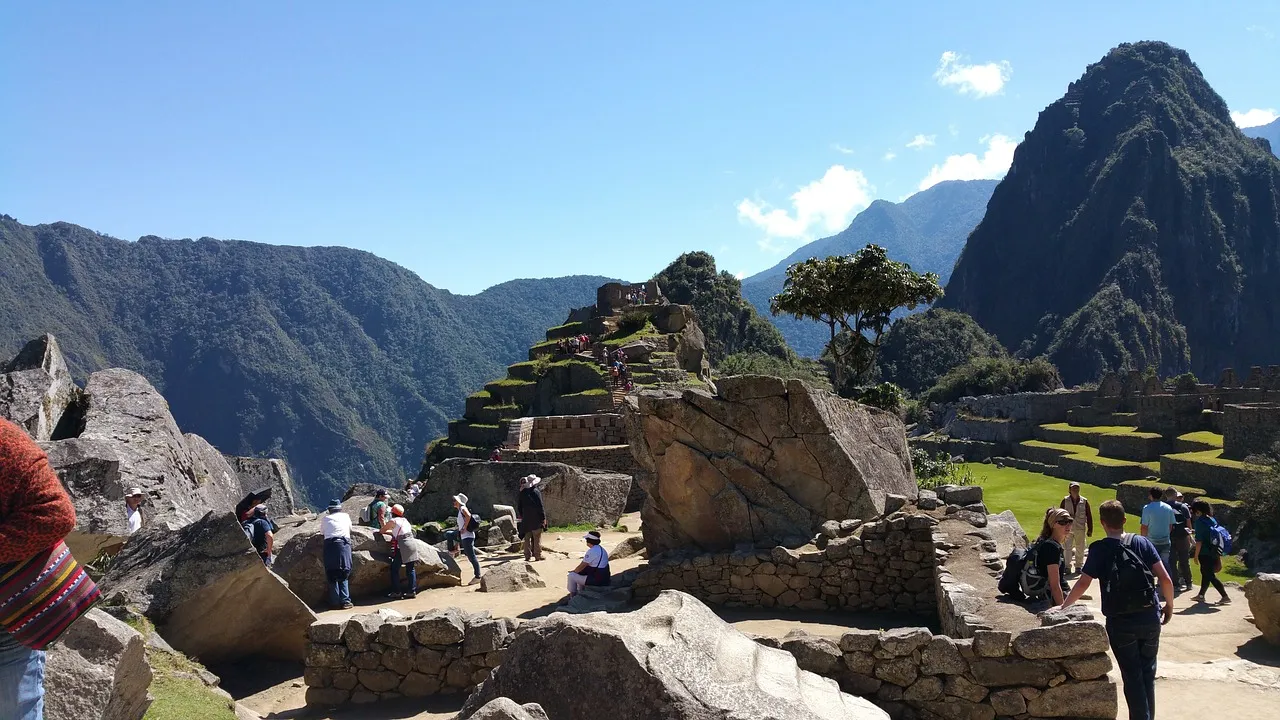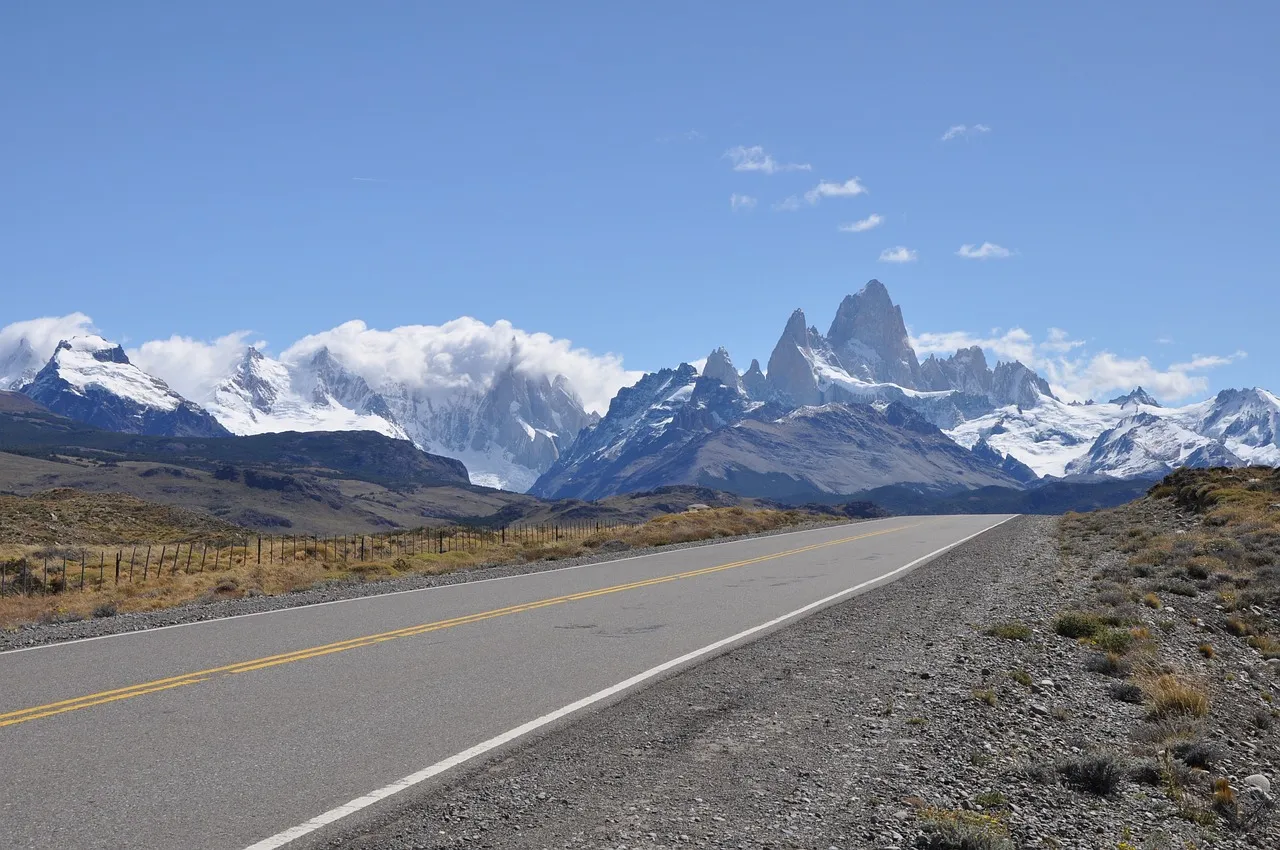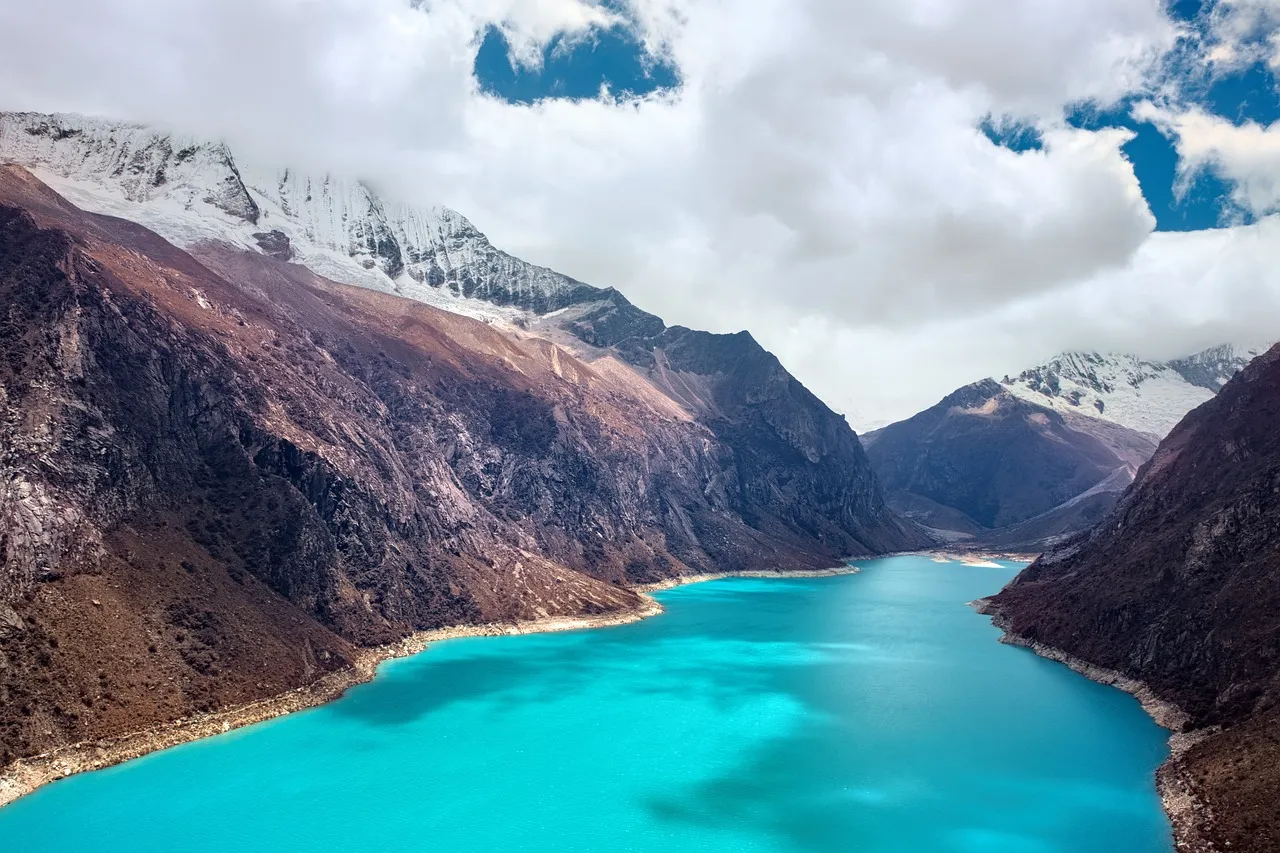In the vibrant tapestry of South America, cultural treasures stand as the jewels that reflect the continent’s rich and diverse heritage. These treasures transcend the boundaries of time, echoing the stories of ancient civilizations, colonial influences, and the modern-day tapestry of cultures that make South America a kaleidoscope of traditions. From the iconic Machu Picchu in Peru to the rhythm-infused streets of Havana, South American cultural treasures are not just landmarks; they are living expressions of the profound connections between people, history, and landscapes.
I. South American Cultural Treasures
As a content writer delving into the exploration of South American cultural treasures, the significance of cultural heritage in this vast and dynamic continent became vividly apparent. The historical architecture of Cartagena, Colombia, and the indigenous traditions of Bolivia’s Uyuni were not just subjects for documentation but gateways into understanding the soul of a region deeply rooted in its cultural legacy. South America’s cultural heritage is a testimony to resilience, adaptation, and the beautiful interweaving of diverse influences. It is the living history that shapes the present and offers a roadmap for the future, making the exploration of these cultural treasures a journey not just through time and space but into the very heart of South America’s identity. Join me in this exploration as we unravel the layers of cultural significance that define the continent’s most precious treasures.
II. Indigenous Marvels of Machu Picchu, Peru: Where History and Spirituality Converge
Nestled high in the Andes, Machu Picchu stands as a testament to the ingenuity of the Inca civilization, an indigenous marvel that transcends time. As a writer captivated by the allure of ancient wonders, exploring Machu Picchu was a journey into the heart of Peru’s rich cultural tapestry.
A. Historical Significance and Inca Architecture
Machu Picchu, often referred to as the “Lost City of the Incas,” unveils a living history etched in the stones of its meticulously crafted architecture. My own footsteps echoed in the terraced agricultural fields and ceremonial plazas, where the Incas showcased their advanced engineering skills. The intricate stonework, aligned with astronomical precision, told a silent story of a sophisticated civilization that thrived amidst the rugged beauty of the Andean peaks.
B. Spiritual and Cultural Importance
Beyond its architectural prowess, Machu Picchu exudes a profound spiritual energy. The Intihuatana stone, a ritual stone associated with ancient Inca ceremonies, stands as a link to the cosmic forces that guided their beliefs. As the morning mist lifted during my visit, the aura of this sacred site became palpable—a connection to the Pachamama (Mother Earth) and the celestial realms. It was a moment of spiritual resonance, where the present melded with the ancient, and the whispers of the past lingered in the mountain breeze.
C. Preservation Efforts and Sustainable Tourism
Preserving Machu Picchu’s sanctity is an ongoing endeavor, and the Peruvian government has implemented measures to ensure sustainable tourism. Navigating the ruins, I witnessed the delicate balance between welcoming visitors and safeguarding this cultural treasure. Restricted entry, guided tours, and conservation initiatives underscore a commitment to protecting Machu Picchu for future generations. My experience became not just a personal exploration but a participation in the collective responsibility to cherish and sustain this indigenous marvel.
In the shadows of Machu Picchu, where the echoes of ancient ceremonies still reverberate, I discovered not just a historical landmark but a living testament to the resilience and brilliance of indigenous cultures. Machu Picchu is a bridge that connects the past with the present, inviting modern explorers to tread lightly, absorb the spiritual energy, and contribute to the ongoing story of preservation and appreciation for this extraordinary heritage.
III. Colonial Heritage in Cartagena, Colombia: A Timeless Tapestry of Culture and Architecture
Drenched in the golden hues of history, Cartagena emerges as a jewel on Colombia’s Caribbean coast—a city where every cobblestone whispers tales of a colonial past. As a writer enamored with the richness of cultural heritage, my exploration of Cartagena was a journey back in time, unraveling the layers of its colonial legacy.
A. Preserved Colonial Architecture
Walking through the narrow streets of Cartagena’s Old Town is akin to strolling through a living museum of Spanish colonial architecture. Vibrant facades adorned with bougainvillea spill their secrets, and intricately designed balconies overlook bustling plazas. My own fascination deepened with every step as I marveled at the preservation of churches, mansions, and public buildings—testaments to the meticulous efforts to maintain the city’s architectural legacy.
B. Historical Fortifications and City Walls
Cartagena wears its history not just in its buildings but in the very stones that guard its perimeter. The formidable city walls, an engineering marvel, stand sentinel against the backdrop of the Caribbean Sea. Exploring the Castillo San Felipe de Barajas and the forts scattered along the coastline was an immersive encounter with the strategic foresight of the city’s founders. From the vantage points, I absorbed the same panoramic views that once safeguarded Cartagena from pirates and invasions.
C. Vibrant Cultural Festivals and Traditions
Cartagena is not frozen in time; it pulses with the vibrancy of its cultural traditions. My visit coincided with the lively celebrations of the Cartagena International Music Festival, where the streets echoed with the melodies of classical compositions. The palpable energy of the festival, combined with traditional dances and local gastronomic delights, provided a glimpse into the city’s contemporary cultural tapestry, woven with threads of its colonial legacy.
In Cartagena, I discovered more than a picturesque cityscape; I found a living canvas where history seamlessly merges with the present. The colonial heritage, meticulously preserved and celebrated, invites visitors to not merely witness but to immerse themselves in the stories embedded in the walls, streets, and festivities of this enchanting coastal gem. It’s a testament to Cartagena’s timeless allure—a destination where the echoes of the past resonate harmoniously with the vibrant beats of the present.
IV. Tango and Architecture in Buenos Aires, Argentina
Buenos Aires, the cosmopolitan heartbeat of Argentina, is a city where the spirit of tango converges with architectural splendor, creating a symphony of passion and elegance. As a writer with a penchant for the poetic, my journey through the streets of Buenos Aires was a dance between the rhythm of tango melodies and the timeless beauty of its architecture.
A. The Birthplace of Tango and Traditional Dance
Stepping into the historic neighborhoods of San Telmo and La Boca, I found myself immersed in the very cradle of tango—the dance that tells stories of love, heartbreak, and the soul of Argentina. In dimly lit milongas, I witnessed seasoned dancers and novices alike succumbing to the allure of the tango’s intricate steps. The cobblestone streets echoed with the haunting strains of bandoneóns, creating an atmosphere where the essence of tango felt alive and eternal.
B. Architectural Marvels in Barrio San Telmo
Wandering through the narrow streets of San Telmo, I marveled at the architectural treasures that unfold around every corner. Colonial mansions with ornate facades stood shoulder to shoulder with modern art installations, creating a delightful juxtaposition of old and new. The Barolo Palace, a homage to Dante’s Divine Comedy, soared above, inviting me to explore its symbolism and intricate design. Buenos Aires, it seemed, was not just a city but a living canvas where architects painted with a palette of history and innovation.
C. Artistic Expression in Street Performances and Local Cafés
Buenos Aires breathes art, not just in grand theaters but in the open-air spaces where the city itself becomes a stage. Street performers, skilled in the art of improvisation, turned public squares into impromptu theaters, captivating passersby with their tango moves. The charm extended to local cafés like Café Tortoni, where the bohemian atmosphere transported me to a bygone era. Here, I sipped rich coffee, surrounded by antique furnishings and the echoes of conversations that had transpired over decades.
In Buenos Aires, tango and architecture form a harmonious duet, an inseparable pair that defines the city’s identity. It’s a place where the sensuality of dance meets the elegance of design, creating an experience that transcends the tangible and lingers in the soul. My journey through Buenos Aires was not just a tour of landmarks; it was a dance, a melody, and a visual feast that left an indelible mark on my artistic sensibilities.
V. Amazonian Indigenous Cultures: Guardians of Ancient Wisdom in a Modern World
Venturing into the heart of the Amazon rainforest, my exploration led me not only through the lush greenery and diverse wildlife but into the intricate tapestry of Amazonian Indigenous cultures. This leg of my journey was more than a mere expedition; it was an odyssey into the sacred realms of traditions, spiritual practices, and the resilience of communities facing the challenges of cultural preservation in the modern age.
A. Diverse Indigenous Communities and Traditions
The Amazon basin is a melting pot of cultural diversity, with a myriad of Indigenous communities each contributing to the rich mosaic of traditions. From the Yawanawá with their vibrant body painting rituals to the Shipibo-Conibo renowned for their intricate textile art, each community I encountered was a custodian of its unique heritage. Sharing moments with these communities revealed a profound connection to the land, a symbiosis woven into their daily lives.
B. Spiritual Practices and Rituals
Delving into the heart of Amazonian spirituality, I witnessed age-old practices that connect these Indigenous cultures with the mystical energy of the rainforest. Shamanic rituals, ayahuasca ceremonies, and dances that mimicked the movements of animals—a profound reverence for nature underscored every gesture. It was evident that these rituals were not mere performances; they were sacred expressions of gratitude and harmony with the environment that sustained them.
C. The Challenge of Cultural Preservation in the Modern Age
Yet, amid the beauty and resilience, a poignant challenge emerged—the delicate dance between preserving tradition and navigating the pressures of the modern world. The encroachment of deforestation, enculturation, and external influences posed a threat to the very fabric of these cultures. Conversations with community leaders echoed a universal concern for balancing progress with the need to safeguard their cultural identity, emphasizing the importance of sustainable development and cross-cultural understanding.
In the heart of the Amazon, the Indigenous cultures stand as sentinels of ancient wisdom, offering the world not just a glimpse into their traditions but a profound lesson in coexistence with nature. My time among these communities was a humbling experience, reminding me that the preservation of cultural diversity is not only a responsibility but an opportunity for mutual enrichment. The Amazonian Indigenous cultures are, in many ways, the guardians of a living heritage, and the echo of their rituals lingers as a reminder of the delicate balance we must strive to maintain in our interconnected world.
VI. Rio de Janeiro’s Carnival: A Dazzling Tapestry of Culture, Rhythm, and History
Embarking on a journey to Rio de Janeiro during Carnival season was not merely stepping into a vibrant celebration; it was immersing myself in the beating heart of Brazil’s cultural soul. The experience was an unparalleled extravaganza, a kaleidoscope of colors, music, and dance that transcended mere festivity.
A. Cultural Extravaganza and Street Parades
The streets of Rio de Janeiro transformed into a living canvas, an explosion of creativity and exuberance. Floats adorned with intricate designs, samba schools showcasing meticulous choreography, and locals dressed in elaborate costumes—every corner pulsated with energy. The sheer scale of the street parades was awe-inspiring, drawing me into a world where celebration knew no bounds.
B. Samba Music and Dance Celebrations
At the heart of Carnival’s rhythmic heartbeat was the enchanting sway of samba. The infectious beats echoed through the streets, captivating everyone in its rhythm. Witnessing the samba schools in action was a sensory delight; the fluidity of movement, the synergy between dancers, and the hypnotic music created an atmosphere where time seemed to stand still. Participating, even as a spectator, felt like becoming part of a living, breathing work of art.
C. The Historical Roots and Evolution of Carnival
Delving into the historical roots of Carnival added a layer of depth to the festivities. From its humble origins as a pre-Lenten celebration to its evolution into a global phenomenon, Rio’s Carnival mirrored the complex history of Brazil itself. The amalgamation of African, European, and Indigenous influences was palpable in every dance step and drumbeat, showcasing the resilience and diversity that defined the nation.
Experiencing Rio de Janeiro’s Carnival was not just witnessing a spectacle; it was being part of a living history, a cultural narrative that unfolded in the streets. The vibrancy, unity, and sheer joy of Carnival left an indelible mark on my soul. As the last notes of samba faded away, I carried with me not just the memories of a grand celebration but a profound understanding of the cultural richness that defines Brazil and its people. Rio’s Carnival is not just an event; it’s an expression of a nation’s spirit, an annual celebration that transcends time, inviting the world to dance to the rhythm of Brazil’s heartbeat.
VII. Colonial Quito and the Galápagos: Ecuador’s Dual Delight of History and Evolutionary Wonders
Embarking on a journey through Ecuador, I found myself enthralled by the enchanting blend of history and natural marvels that awaited me in Colonial Quito and the Galápagos Islands.
A. UNESCO World Heritage Site of Quito’s Old Town
Quito’s Old Town, a UNESCO World Heritage Site, unfolded before me like a meticulously preserved manuscript of Ecuador’s colonial history. The cobbled streets of this Andean gem led me through a living museum, where Spanish colonial architecture stood in harmonious contrast to indigenous influences. Navigating through plazas adorned with historic cathedrals and monasteries, I was transported back in time. The vibrant colors of the city’s facades and the intricate details of its churches encapsulated centuries of cultural convergence.
B. Galápagos Islands: Evolutionary and Cultural Significance
From the rich colonial tapestry of Quito, I transitioned to the evolutionary wonders of the Galápagos Islands. The archipelago, known for its unique biodiversity and as a living laboratory of evolution, offered a surreal communion with nature. Snorkeling alongside marine iguanas, observing giant tortoises in their natural habitat, and encountering fearless wildlife were experiences that reshaped my understanding of the interconnectedness of life. Beyond the evolutionary marvels, the islands also held cultural significance, with local communities contributing to the delicate balance between conservation and sustainable living.
C. Efforts in Conservation and Eco-Tourism
As I traversed the Galápagos, it became evident that the delicate ecosystem was not just a spectacle but a responsibility. Conservation efforts, evident in strict regulations and eco-friendly tourism practices, showcased Ecuador’s commitment to preserving this natural wonder. The islands’ residents, passionate about their environment, played a crucial role in promoting responsible tourism. The juxtaposition of evolutionary marvels and conservation endeavors left me inspired and reinforced the notion that tourism could be a force for good in preserving the world’s most delicate ecosystems.
Ecuador, with its dual offering of Colonial Quito’s historical richness and the Galápagos’ evolutionary wonders, emerged as a destination where the threads of the past and the present wove together seamlessly. The journey was a testament to Ecuador’s commitment to preserving its heritage and natural treasures, inviting travelers to explore a world where time, culture, and nature converge in a harmonious dance.
VIII. Chilean Patagonia: Torres del Paine – Where Nature and Culture Converge
Venturing into the heart of Chilean Patagonia, I found myself captivated by the awe-inspiring beauty of Torres del Paine and the intricate tapestry of the Kawésqar people’s indigenous heritage.
A. Indigenous Heritage of the Kawésqar People
As I delved into the history of Torres del Paine, the indigenous Kawésqar people emerged as guardians of this pristine wilderness. Their deep connection with the land was palpable, reflected in age-old traditions, stories, and a profound respect for nature. Engaging with local communities, I discovered a living testament to resilience and a harmonious coexistence with the untamed landscapes that surrounded them.
B. Glacial Landscapes and Cultural Significance
The iconic granite towers of Torres del Paine soared against the backdrop of glacial lakes and vast expanses of untamed wilderness. Each step on the rugged trails revealed not only the geological wonders sculpted by time but also the cultural significance attributed to these landscapes by the Kawésqar. The windswept plains and icy fjords echoed with stories of a people deeply intertwined with the elements, imparting a sense of reverence for the natural world.
C. Responsible Tourism and Conservation Initiatives
Chilean Patagonia exemplifies the delicate balance between tourism and conservation, with Torres del Paine at its forefront. The commitment to responsible tourism was evident in conservation initiatives aimed at preserving the unique ecosystems. Guided by strict regulations, visitors were urged to tread lightly, minimizing their environmental footprint and contributing to the preservation of this ecological haven. Engaging with local guides and indigenous communities, I witnessed firsthand the dedication to preserving not only the natural wonders but also the cultural heritage embedded in the soul of Patagonia.
Torres del Paine stands not only as a testament to Chile’s commitment to conservation but also as a bridge between the past and the future. It beckons adventurers to immerse themselves in the majesty of nature, to learn from the Kawésqar people, and to contribute to the ongoing story of responsible exploration. My journey through Chilean Patagonia was not just a travel experience; it was an immersion into a world where glaciers, mountains, and indigenous heritage converge in a symphony of natural and cultural richness.
IX. Afro-Peruvian Heritage in Lima, Peru – A Rhythmic Tapestry of Culture
Embarking on a cultural exploration of Lima, Peru, I uncovered the vibrant and often overlooked Afro-Peruvian heritage that pulsates through the city’s veins, leaving an indelible mark on its music, dance, and culinary traditions.
A. The Influence of African Culture on Peruvian Music
Lima, a city known for its rich history, boasts a musical heritage deeply rooted in African rhythms. From the soulful beats of the cajón, an Afro-Peruvian percussion instrument, to the intricate melodies of traditional songs, the African influence is unmistakable. My journey led me to intimate venues where musicians skillfully blended Spanish, Indigenous, and African elements, creating a unique symphony that resonated with the heartbeats of a diverse cultural fusion.
B. Traditional Afro-Peruvian Dance and Cuisine
Immersing myself in the heart of Lima’s vibrant neighborhoods, I witnessed the captivating artistry of Afro-Peruvian dance. The undulating movements and percussive footwork told stories of resilience, freedom, and the enduring spirit of a community that had overcome adversity. Additionally, the Afro-Peruvian influence extended to the culinary scene, where I savored exquisite dishes that bore the imprint of African heritage, such as the renowned “Tacu Tacu” and “Sudado de Pescado,” each a delicious testament to the fusion of flavors that defines Afro-Peruvian cuisine.
C. Cultural Festivals Celebrating Afro-Peruvian Heritage
My journey coincided with vibrant cultural festivals that celebrated Lima’s Afro-Peruvian roots. These events were a kaleidoscope of color, music, and dance, providing a platform for artists to showcase their talents and for the community to come together in joyful celebration. Participating in these festivals allowed me to witness the deep sense of pride and connection that permeates through generations, fostering a renewed appreciation for the Afro-Peruvian contributions to Lima’s cultural mosaic.
In exploring Lima’s Afro-Peruvian heritage, I not only discovered the rhythmic soul of the city but also witnessed the resilience of a community that continues to shape Peru’s cultural identity. Lima, with its Afro-Peruvian heartbeat, is an invitation to delve into a world where history and creativity converge, leaving an indelible impression on those fortunate enough to experience its cultural richness.
X. Bolivian Altiplano: Indigenous Textiles and Traditions – Weaving Stories of Heritage
Embarking on a journey through the captivating landscapes of the Bolivian Altiplano, I was entranced by the intricate tapestry of indigenous textiles and traditions woven into the very fabric of Quechua and Aymara communities.
A. Rich Textile Traditions of Quechua and Aymara Communities
As I ventured into the heart of the Altiplano, I discovered the living artistry of Quechua and Aymara weavers. Each textile, a testament to centuries-old techniques passed down through generations, told a unique story. Vibrant colors, geometric patterns, and symbolic motifs danced across the looms, reflecting the Andean cosmovision and the profound connection these communities maintain with their ancestral roots. The markets and workshops bustled with the rhythmic sound of weaving, creating an immersive experience into the soul of Bolivian craftsmanship.
B. Spiritual Significance of Traditional Clothing
Beyond their aesthetic appeal, the traditional textiles served as a form of spiritual expression for the indigenous communities. Every thread, every stitch, held profound meaning, depicting the relationship between individuals and their environment. Traditional clothing, adorned with intricate patterns, became a living language, conveying stories of daily life, cosmology, and spirituality. Witnessing the locals donned in these garments during ceremonial occasions offered a glimpse into a world where attire is a sacred language, spoken with deep reverence.
C. Cultural Identity Expressed through Art and Craftsmanship
The art of weaving is not merely a skill; it is a powerful expression of cultural identity. In engaging with Quechua and Aymara artisans, I learned that their craft goes beyond aesthetics; it is a form of cultural preservation and resistance. Amidst the challenges of modernization, these communities use their art to assert their unique identity, fostering a sense of pride and continuity. The textiles, be they intricate shawls, ponchos, or tapestries, are not just commodities; they are tangible embodiments of a living heritage.
My journey through the Bolivian Altiplano was a profound exploration of the intricate threads that bind the Quechua and Aymara communities to their past, present, and future. In the rhythm of weaving, I found a harmonious symphony of tradition, spirituality, and resilience—a testament to the enduring beauty of Bolivian indigenous textiles and the cultural richness they bestow upon the world.
XI. Guaraní Culture in Paraguay – Harmony in Heritage
Embarking on a cultural odyssey in the heart of South America, I found myself immersed in the enchanting world of the Guaraní people in Paraguay. The journey unfolded like a rich tapestry, weaving together the vibrant threads of indigenous traditions, musical legacies, and valiant efforts to preserve a unique linguistic and cultural identity.
A. Indigenous Guaraní People and Their Traditions
Nestled within the lush landscapes of Paraguay, the Guaraní people revealed a tapestry of traditions rooted in the embrace of nature and community. As I engaged with Guaraní elders, I discovered a profound connection to the land, reflected in age-old agricultural practices and rituals. Their spiritual bond with the environment imbued their daily lives with a deep sense of reverence, reminding me that culture, for the Guaraní, is not a relic of the past but a living, breathing entity.
B. Musical Heritage and Traditional Instruments
The rhythmic heartbeat of Guaraní culture echoed through the melodic strains of traditional music. I witnessed the magic of their musical heritage, where songs and dances became a vibrant expression of communal identity. Traditional instruments like the harp, guitar, and mburucuyá (a type of flute) carried centuries of stories, creating an auditory journey into the soul of Guaraní creativity. It was a privilege to witness the passing down of musical traditions from one generation to the next, a living testament to the resilience of this indigenous culture.
C. Efforts to Preserve Guaraní Language and Customs
As the modern world encroaches, the Guaraní people stand as guardians of a linguistic and cultural treasure. The Guaraní language, spoken with grace and pride, is central to their identity. Witnessing the community’s dedication to preserving their language and customs was a poignant reminder of the challenges faced by indigenous cultures globally. In schools and community initiatives, the Guaraní people actively work to ensure that their ancestral language continues to thrive, creating a bridge between the past and the future.
In delving into the heart of Guaraní culture in Paraguay, I found not just a story but a symphony—a harmonious blend of tradition, music, and resilience. The warmth of the people, the rhythms of their music, and the determination to safeguard their heritage left an indelible mark on my understanding of the diverse cultural tapestry that makes South America truly extraordinary.
XII. Carnival of Oruro, Bolivia: A Kaleidoscope of Cultural Splendor
Stepping into the vibrant city of Oruro during its annual Carnival was akin to entering a portal that transcends time and space, immersing me in the magic of a UNESCO-recognized cultural extravaganza. The Carnival of Oruro, nestled high in the Bolivian Andes, unfolded before my eyes like a living tapestry woven with threads of history, indigenous spirituality, and the pulsating rhythm of folk traditions.
A. UNESCO-Recognized Cultural Festival
The grandeur of the Carnival, recognized by UNESCO as a Masterpiece of the Oral and Intangible Heritage of Humanity, resonates through the cobbled streets of Oruro. As I walked amidst the kaleidoscope of colors, the significance of this cultural celebration became apparent. It’s not merely an event; it’s a living testament to the cultural richness and resilience of the Bolivian people. Each step taken during the Carnival felt like a step back in time, where age-old traditions harmonize with the present.
B. Historical Roots and Indigenous Rituals
Rooted in pre-Columbian indigenous rituals, the Carnival of Oruro is a syncretic celebration that blends traditional Andean beliefs with Catholicism. The origins trace back to a sacred mining ritual dedicated to the deity of the underworld, Tío Supay. This historical depth adds layers of profound meaning to the vibrant festivities, creating a space where spirituality and festivity coalesce in a breathtaking display of cultural syncretism.
C. Elaborate Folk Dances and Traditional Masks
The heart of the Carnival beats to the rhythm of thousands of dancers adorned in intricate costumes, each telling a story of folklore and myth. The air is thick with the energy of diablada, morenada, and caporales dances, performed with precision and passion. Traditional masks, adorned with feathers, sequins, and symbolic motifs, transform the dancers into living embodiments of ancestral spirits. It was as if the past and present were engaged in a spirited dance, with every twirl and beat echoing the collective history of the Bolivian people.
The Carnival of Oruro is not merely a festival; it’s an odyssey through time and culture. It’s a living narrative that beckons travelers and cultural enthusiasts alike to witness the intricate dance of tradition and modernity. As I left Oruro, the echoes of the Carnival lingered in my memory, a testament to the power of cultural celebration in preserving the essence of a people.
XIII. Afro-Brazilian Heritage in Salvador, Brazil: A Tapestry of Cultural Resilience
My journey through Salvador, the vibrant heart of Brazil’s Bahia region, was a soul-stirring encounter with the rich tapestry of Afro-Brazilian heritage. In the heart of Salvador lies Pelourinho, a district where the cobblestone streets whisper tales of resilience, rebellion, and the enduring spirit of Afro-Brazilian history.
A. Pelourinho: Preserving Afro-Brazilian History
Pelourinho, a UNESCO World Heritage site, emerged before me like a living museum, adorned with colorful colonial architecture and echoing with the rhythmic beats of samba. As I wandered through the alleys, I felt the palpable energy of a place that holds the painful legacy of slavery but refuses to let it define its narrative. Pelourinho is a testament to the tenacity of the Afro-Brazilian community, a living canvas that depicts their journey from oppression to empowerment.
B. Candomblé and Capoeira Cultural Practices
Salvador is not merely a city; it’s a repository of cultural practices that have endured centuries. In the beating heart of the Afro-Brazilian community, I witnessed the sacred dance of Candomblé—a spiritual practice that fuses West African Yoruba traditions with Catholicism. The vibrant rituals, accompanied by rhythmic drumming and elaborate costumes, speak to a profound connection with ancestral roots. Additionally, the streets echoed with the hypnotic rhythm of capoeira—a martial art disguised as dance—a testament to the resilience and resistance of the Afro-Brazilian people against oppression.
C. The Significance of the Bahian Carnival
My visit coincided with the Bahian Carnival, a spectacle that transcends the conventional notions of festivity. Salvador’s Carnival is a celebration where Afro-Brazilian culture takes center stage. The pulsating beats of axé music, the dazzling costumes of the blocos afros, and the infectious joy of the participants create an atmosphere that is both exhilarating and deeply rooted in cultural pride. It was during the Carnival that I felt the true essence of Salvador—a city that celebrates its Afro-Brazilian heritage with unbridled passion and infectious energy.
Salvador’s Afro-Brazilian heritage is not confined to history books; it lives and breathes in the rhythm of its streets, the vibrancy of its festivals, and the resilience of its people. My time in Salvador was a profound journey into a culture that refuses to be forgotten—a celebration of strength, unity, and the enduring beauty of Afro-Brazilian heritage.
XIV. Practical Tips for Immersing in South American Cultural Treasures: A Traveler’s Guide
As I embarked on my South American journey, I quickly realized that immersing oneself in the cultural treasures of this diverse continent requires more than just ticking off landmarks from a checklist—it demands a mindful and respectful engagement with the rich tapestry of traditions. Here are some practical tips I gathered from my own immersive experiences:
A. Respectful Engagement with Local Customs
The key to unlocking the true essence of South American cultures lies in respectful engagement with local customs. Whether participating in indigenous rituals, joining community celebrations, or sharing a meal with a local family, approaching these experiences with an open heart and a genuine curiosity fosters meaningful connections. Understanding and respecting cultural norms, such as dress codes and traditional etiquette, goes a long way in creating authentic interactions that transcend the boundaries of language.
B. Learning Basic Phrases in Indigenous Languages
One of the most profound ways to connect with the local communities is by learning a few basic phrases in indigenous languages. While English or Spanish might suffice in tourist hubs, making an effort to speak Quechua in Peru, Guarani in Paraguay, or Mapudungun in Chile can be a game-changer. The sparkle in locals’ eyes when you attempt their language creates an immediate bridge, breaking down barriers and fostering a deeper connection. Language, after all, is a gateway to understanding the soul of a culture.
C. Supporting Cultural Preservation Initiatives
Preserving the cultural heritage of South America is a collective responsibility, and as travelers, we play a pivotal role. Supporting local artisans, attending cultural performances, and contributing to community-based initiatives ensure that traditions are not just preserved but thrive. Seek out authentic handmade crafts, visit indigenous cooperatives, and opt for cultural experiences that directly benefit local communities. By making mindful choices, we become stewards of cultural preservation, leaving a positive impact on the places we explore.
Embarking on a journey through South America is a commitment to understanding and celebrating its diverse cultural tapestry. These practical tips, drawn from my own experiences, transformed my travels from mere sightseeing to an immersive exploration of traditions, connecting me to the heartbeat of this extraordinary continent.
XV. Documenting and Sharing Your Cultural Journey: A Tapestry of Experiences
Embarking on a cultural journey through South America is akin to weaving a tapestry of vibrant stories and traditions. As a fervent traveler, I discovered that documenting and sharing these encounters adds a profound layer to the richness of the experience. Here’s a glimpse into my personal approach and tips for capturing and conveying the essence of a cultural journey:
A. Photography Tips for Cultural Experiences
Photography is a powerful medium to encapsulate the spirit of cultural encounters. Beyond capturing mere visuals, focus on telling a story through your lens. Candid shots often reveal genuine emotions and candid moments that scripted scenes may miss. Engage with your subjects; ask for permission when appropriate, and be open to the unexpected. Whether it’s a lively market scene, a traditional dance, or a local artisan at work, aim to showcase the authenticity and uniqueness of the moment. Experiment with angles and lighting to evoke the true atmosphere of the cultural landscape.
B. Writing About Cultural Encounters in a Travel Journal
A travel journal is a treasure trove of memories, emotions, and reflections. When it comes to cultural encounters, take the time to jot down your observations, personal reflections, and conversations with locals. Capture the sensory details—the scents of local cuisine, the sounds of traditional music, the feel of unique fabrics. This not only etches the experiences into your memory but also serves as a chronicle of the cultural nuances that made your journey extraordinary. Share anecdotes, record meaningful conversations, and let your words breathe life into the pages.
C. Promoting Cultural Understanding Through Social Media
In an interconnected world, social media becomes a powerful tool to foster cultural understanding. Share your cultural journey through platforms like Instagram, Facebook, or a travel blog. Craft thoughtful captions that provide context and insights into the cultural significance of your experiences. Use hashtags to connect with the travel community and amplify the voices of local initiatives. By sharing your journey, you become a cultural ambassador, promoting not just the places you visit but the stories and traditions that make them unique.
Documenting and sharing your cultural journey is not just a personal endeavor; it’s a contribution to a global dialogue on diversity and interconnectedness. As I scrolled through my own cultural chronicles, I realized that the true beauty of these experiences lies in their ability to inspire others to embark on their own transformative journeys, fostering a deeper appreciation for the world’s cultural tapestry.
XVI. Conclusion
Our journey through South America’s cultural treasures has been an exhilarating expedition, uncovering the layers of history, art, and traditions that paint the continent’s diverse landscape. From the mystical allure of the Nazca Lines in Peru to the soul-stirring tango rhythms of Buenos Aires, each cultural treasure we explored encapsulated the unique stories etched into the very fabric of South America. The indigenous heritage of Ecuador’s Otavalo and the architectural marvels of Cuzco, Peru, weren’t just destinations; they were windows into the profound cultural legacy that spans centuries. Together, these cultural treasures weave a narrative that transcends borders, inviting us to appreciate the richness of South America’s cultural mosaic.
As I conclude this exploration, I extend an impassioned call to fellow enthusiasts of travel and cultural appreciation: embrace and preserve the rich cultural heritage that South America so generously shares. The significance of these treasures lies not just in their aesthetic appeal but in the stories they tell, the traditions they represent, and the lessons they offer. From the mystical rites of the Amazonian tribes to the colonial echoes in the streets of Quito, South America’s cultural heritage is a collective inheritance that deserves our respect and protection. Let us be conscientious travelers, eager not only to explore but to contribute to the preservation of the vibrant tapestry that makes South America unique. As we embark on future journeys, may we carry with us not just souvenirs but a deepened understanding and appreciation for the cultural treasures that bind us all. Happy travels!
